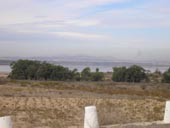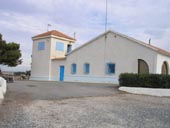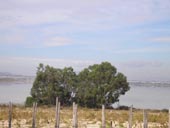Parque Natural de La Mata y Torrevieja
Interesting article on the Parque Natural de La Mata y Torrevieja.



Torrevieja and La Mata Salt Lakes
Parque Natural de La Mata y Torrevieja - Situated in the Vega Baja region of the southern Costa Blanca, Spain, the salt flats of La Mata and Torrevieja occupy parts of the municipal districts of Guardamar del Segura, Montesinos, Rojales and Torrevieja. The two salt lakes of Torrevieja and La Mata and the surrounding areas are now a protected Natural Park. The La Mata salt lake was declared an important area for birdlife in 1989 and the whole area was declared a Natural Park in 1996.
The history of the salt lakes goes back many years to the 13th century when the first licenses were granted by the crown for the harvesting of salt. They are the oldest and biggest salt lakes in Europe, and were very important for the economy of the area.
The two salt lakes are actually separated by an area known as El Chaparral, and joined only by an artificial channel - the Torrevieja lake is the largest though historically La Mata has always been the more important.
Salt production in the Torrevieja lake still continues today but there is no longer any salt produced at La Mata - though water from the La Mata lake is channelled into the Torrevieja lake.
There is very little vegetation in the salt lakes due to the high level of salinity, though there are some rush beds mainly in the La Mata lake and these are home to many rush loving bird species. The salt flats are a very important area for bird life and there are over 200 different species visiting the area including flamingos, avocets, zapullines, plovers, stilts and grebe.
There is a Tourist Information office close to the N332 at La Mata with some interesting exhibits of the various flora and fauna of the salt lakes, there is also a telescope on the roof where visitors can scan the lake and zoom in on any interesting sightings. There are also leaflets and information about the salt lakes in general.
The park has been laid out with two distinct and well signposted routes - one for walking and the other for walking or cycling. Route 1 - the yellow route (best by foot), in total about 3 kilometres, it takes visitors to the southern banks of the La Mata lake and has three observation points for bird watching. Towards the end of this route is a very nice shaded picnic area with plenty of seating and picnic tables provided. Route 2 - the red route (by foot or bicycle), is somewhat longer at 5.2 kilometres. At its highest point it is possible to see both lagoons together with panoramic views of the Mediterranean sea and on a clear day it is possible to see as far as the island of Tabarca.
Whilst all the tourist information on the park states a large population of flamingos (2,000 specimens), when we visited in mid-October there were none to be seen. Obviously different species of bird are best seen during different times of the year, but if you particularly wish to see flamingos you may have more success by visiting the salt flats at Santa Pola which always seem to have a population of flamingos (though summer time is the best season to see them).
The Parque Natural de La Mata y Torrevieja can be easily accessed via the coast road (N332) between Alicante and Cartagena and it is clearly signposted. The Tourist Information office is open most days of the year (0900-1430).
Torrevieja Links: Torrevieja Map - Torrevieja Weather - Torrevieja History - Torrevieja Pictures - Pacha Torrevieja - Torrevieja Marina - Torrevieja Spain - Los Locos Beach - Torrevieja Costa Blanca - Torrevieja Beach
Nearby Places: Punta Prima - Playa Flamenca - La Zenia - Cabo Roig - Guardamar del Segura - Ciudad Quesada - La Mata
Attractions: Rio Safari Elche - Palacio de Jacarilla
Golf Courses: Villamartin - Las Ramblas - Campoamor - La Finca - Lo Romero - La Marquesa Golf - Spain Golf Courses
Related: Orihuela Costa - Alicante - Murcia - Orihuela - Spain - Builders
HOME
